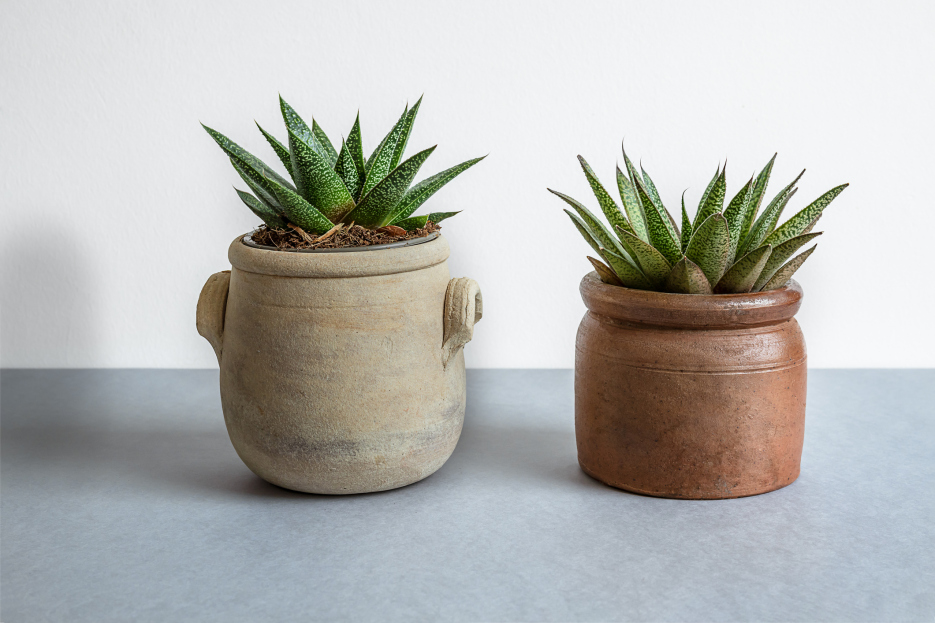
Gasteria spp. is a unique and attractive succulent plant that belongs to the Aloe family. Native to South Africa, these plants are known for their thick, fleshy leaves and striking patterns, making them a popular choice for both beginner and experienced gardeners. Gasteria plants are relatively low-maintenance and can thrive in a variety of environments, whether grown indoors or outdoors. In this blog, we’ll cover everything you need to know about caring for your Gasteria plant to ensure it remains healthy and thriving.
Gasteria spp. prefer bright, indirect sunlight, making them ideal for windowsills or other well-lit indoor spots. While they can tolerate some direct sunlight, too much can lead to leaf burn or sunscald, especially in hotter climates. Therefore, placing your Gasteria in a location where it receives filtered light, such as near a north- or east-facing window, will help it grow best.
If you're growing Gasteria indoors, avoid placing it in a location with intense, direct sunlight, as this can damage its leaves. If the plant starts to become leggy or stretched out, it may be an indication that it's not getting enough light, and you should move it to a brighter spot.
Like most succulents, Gasteria spp. are drought-tolerant plants that thrive with minimal watering. Overwatering is one of the most common mistakes people make when caring for succulents, and Gasteria is no exception. The key is to allow the soil to dry out completely between waterings.
Here’s a simple guideline for watering your Gasteria:
During the winter months, when the plant is in a dormant phase, you can reduce watering. Gasteria requires much less water during the cooler months, as it doesn't actively grow during this time.
Gasteria spp. thrive in warm temperatures and prefer a dry environment. The ideal temperature range for Gasteria is between 60°F to 85°F (16°C to 29°C). They can tolerate higher temperatures but should be protected from extreme heat or frost.
As for humidity, Gasteria plants prefer low to moderate humidity. They’re well-suited for homes with typical indoor humidity levels, and they don’t require any special care to maintain humidity. Avoid placing them in areas with high humidity, like bathrooms, as this can cause the plant to become susceptible to fungal diseases.
It’s also important to ensure your Gasteria is kept in a location that offers good air circulation. This helps the plant maintain healthy leaves and prevents the buildup of moisture that could lead to issues like rot.
Gasteria spp. are relatively low-feeding plants and do not require frequent fertilization. In fact, over-fertilizing can lead to weak, leggy growth. That being said, feeding your plant during its growing season (spring and summer) can encourage healthy growth and vibrant foliage.
Use a diluted, balanced fertilizer (such as a 10-10-10 or 20-20-20) and apply it once a month during the growing season. Make sure to use a fertilizer that’s suitable for succulents to avoid excessive nitrogen, which can lead to poor growth.
During the fall and winter months, Gasteria typically enters a period of dormancy, so avoid fertilizing during this time. Excess nutrients during dormancy can result in weak, unhealthy growth.
Tip: If you prefer an organic approach, you can use a diluted solution of compost tea or fish emulsion once every two months during the growing season.
Gasteria spp. are generally low-maintenance plants, but they can benefit from occasional pruning and care to ensure they stay healthy and attractive.
Gasteria spp. can be propagated through leaf cuttings or offshoots (pups). Here's how you can propagate your plant:
Tip: Propagating by pups is usually easier and more successful than using leaf cuttings, as pups are genetically identical to the parent plant and often root faster.
Yes, Gasteria spp. are non-toxic to pets. This makes them a safe option for homes with cats and dogs. While it’s always a good idea to discourage your pets from nibbling on plants, Gasteria won’t cause any harm if accidentally ingested.
Q: Why are my Gasteria leaves turning yellow?
A: Yellowing leaves can be a sign of overwatering or poor drainage. Make sure the soil dries out completely between waterings, and check that the pot has proper drainage holes.
Q: Can Gasteria be grown outdoors?
A: Yes, Gasteria can be grown outdoors in warm, dry climates (USDA zones 9-11). However, it must be protected from frost and extreme cold. In cooler climates, Gasteria is best grown indoors or in containers that can be brought inside during winter.
Q: How often should I water my Gasteria?
A: Water your Gasteria when the top 1-2 inches of soil feel dry to the touch. In warmer months, this might mean watering once every 1-2 weeks, but in the winter, reduce watering as the plant’s growth slows down.
Q: Can Gasteria be propagated from seeds?
A: While it is possible to propagate Gasteria from seeds, it’s much easier and more successful to propagate it through pups or leaf cuttings.
Q: What kind of soil is best for Gasteria?
A: Gasteria prefers well-draining soil, such as a cactus or succulent mix. If you’re making your own, combine equal parts of sand, perlite, and peat to create a well-draining medium.